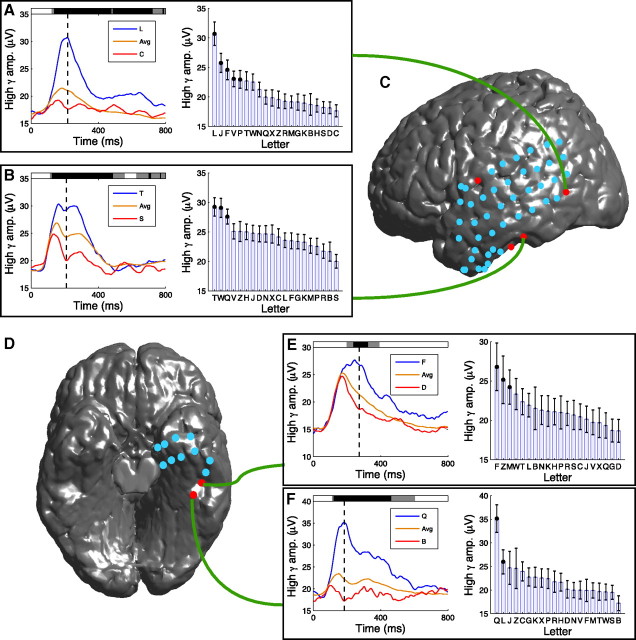Figure 3.
An example of letter-related high-gamma activity. A, A raw ECoG trace at an electrode from patient 20's left temporal cortex (Brodmann area 21) after viewing letter L. B, The EcoG trace from A filtered in the high-gamma band (65–128 Hz). Black line indicates the instantaneous amplitude of the filtered signal. C, A sample raw ECoG trace after presentation of letter C (same electrode as A). D, The ECoG signal from C filtered in the high-gamma band. E, Amplitude of high-gamma ECoG activity at this electrode across all individual trials. Trials are ordered so that presentations of the same letter are contiguous (see labels on vertical axis). F, The mean high-gamma ECoG amplitude for each letter.

